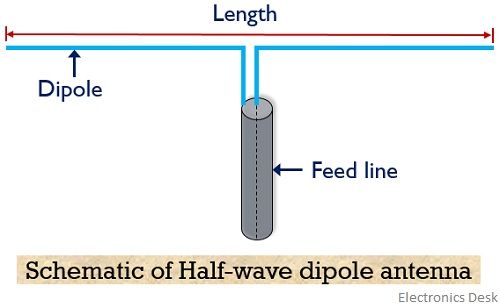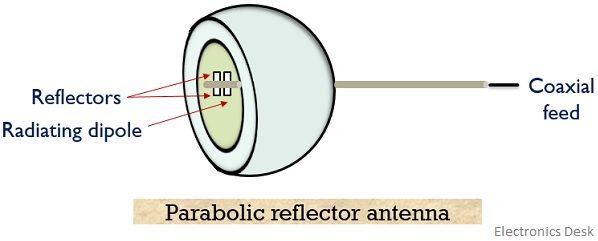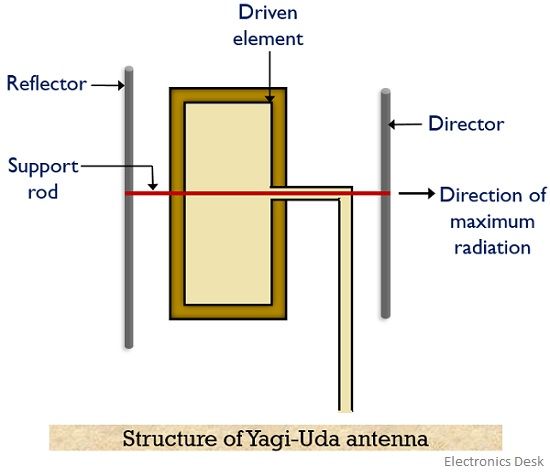In the previous article, we have discussed that antenna serves as an integral element of a wireless communication system.
Antennas are the devices that are used to convert an electrical signal into the electromagnetic signal and electromagnetic signal back to electrical form. It acts as a key component of wireless communication thereby permitting radio wave communication.
Both transmitting as well as receiving ends require antenna. Thus on the basis of operation performed by them, these fall under the category of transducers.
So, we can say that with the development in the communication industry, the use of antenna has become more significant.
There exists a large category of antenna with various shapes and sizes.
A communication system may involve a single antenna at an end or a combination of various entities in order to form a single antenna unit. In such a case, a combination of various antennas form antenna array.
The application and operating frequency lead to cause variation in the size of antennas. Also, antennas can be formed in 1D, 2D or 3D configuration and maybe in linear, planar, circular, spherical, etc. geometry.
So, in this article, we will discuss the various types of antennas used in wireless communication.
Types of Antennas
The various antennas used in the communication system are explained below:
- Wire Antenna: Wire antenna is a category of antennas that are formed by wires of arbitrary length. The orientation of wire antennas with respect to ground can be horizontal, vertical or sloppy. Also, it can be fed either along the centre, end or between the length.
The length of wire antennas is generally multiple of half-wavelength i.e., n λ/2.
However, an antenna with a length greater than λ/2 is referred as a long wire antenna.
- Dipole antenna: Dipole antennas are the type of antenna in which the length of the conductor is less as compared to the wavelength of the signal. Generally, the length of the wire is half the wavelength. Thus are referred as a half-wave dipole.

- Short dipole antenna: It is one of the simplest types of antennas in which the length of the wire is short in comparison to the wavelength. Usually, in a short dipole antenna, the length of the wire is 10 times lower than the wavelength.
It is formed by the arrangement of two thin conductors that are separated by a small distance. These are not much efficient thus have fewer applications.
- Monopole antenna: Monopole antenna is a class of antenna in which the length of the conducting wire is half the length of dipole i., λ/4. This is also known as quarter-wave monopole. The radiation pattern of both the monopole antenna and the half-wave dipole antenna is the same.
In this, the field gets radiated in the upper hemispherical region thus total radiated power is half of the dipole antenna.
Generally, these are found applications as vehicle-mounted antenna.
- Loop antenna: This category of antenna has a loop-like structure formed by bending straight uniform wires. The orientation of the loops can be circular, elliptical, rectangular, square, etc. And the efficiency of the antenna relies on the circumference of the loop.

- Slot antenna: A slot antenna is formed by forming single or multiple slots on the surface of the waveguide. For example, in the case of a rectangular waveguide, slots can be cut along broader or narrower walls of the structure in either horizontal, vertical or inclined manner.
A type of antenna in which the slot is cut along at the edge of the structure is referred as notch antenna.
- Horn antenna: A type of antenna with a waveguide structure in the form of the horn is known as horn antenna. These are specifically designed to operate at microwave frequencies.
When they act as feed elements of larger antennas, then are known as feed horns.
- Reflector Antenna: These antennas are used to perform modification in the radiation pattern of the radiating elements. When the electromagnetic wave strikes the surface of these antennas then it allows reflection of the wave in the desired direction.
These are mainly active or passive in nature and are formed using metal sheets or mash of wires. A source of energy is used to provide illumination to these antennas.
 The excitation to reflector antennas are generally provided by antennas like a dipole, horn, slot, etc. Thus exciting antennas are known as primary antennas and reflector antennas are referred as secondary antennas.
The excitation to reflector antennas are generally provided by antennas like a dipole, horn, slot, etc. Thus exciting antennas are known as primary antennas and reflector antennas are referred as secondary antennas.
- Travelling Wave Antenna: It is a type of antenna designed free from the standing waves. It is a non-resonant type of antenna. It offers larger bandwidth as one end is fed with input signal while the other is terminated with characteristic impedance thereby avoiding reflections.
- Helical wire antenna: Another name for it is the helix antenna. Here a helical structure is formed using one or more wire which is excited by external feed. It offers two radiation mode i.e., normal and axial mode.
Normal mode: In this mode, it acts as short-dipole because the dimensions are smaller than the wavelength.
Axial mode: Here the dimensions are the same as the wavelength of the signal.
The external feed provided to it can be either an axial or a peripheral manner.
- Yagi-Uda antenna: It is a wire array antenna having one active and multiple parasitic elements. Here folded dipole acts as an active element of length λ/2. While the parasitic elements consisting of a reflector and few directors are placed in front of active elements.

- Microstrip antenna: These are also known as patch antennas and are found in rectangular, circular, elliptical, etc. shapes. This antenna operates at microwave frequency. The signal is fed to these antennas either from centre, end or offset region. It requires a free space region for the feed line.
- Lens Antenna: A lens antenna is formed by electromagnetic lens either convex, concave or convex-concave nature with external feed. The effective refractive index of the lens antenna may be larger or smaller than unity.
Lens antenna with η<1, possesses greater bandwidth and are highly dispersive in nature. However, η>1 are non-dispersive lens antennas. These antennas are generally composed of either metallic or non-metallic dielectrics.
So this is all about the major classification of antennas. A noteworthy thing in the case of antennas is that antennas at distant are considered as point sources irrespective of their size.
As against antennas that are present close to the point of observation would not be a point source even if its dimensions are small.
So, specifically one cannot say whether an antenna is a point source or not just by dimensions. Thus we can say the factor that decides whether the antenna is a point source or not is the ratio of the distance between antenna and point of observation to the physical size of the antenna.
Therefore, it can be concluded that for the value of ratio greater than unity, the antenna is considered to be a point source. Parabolic reflectors are the example of point source because of their presence at a sufficiently large distance from the main dish.
I like your article. Thanks